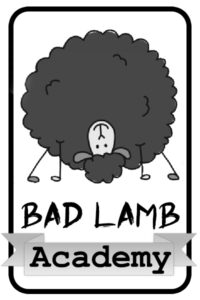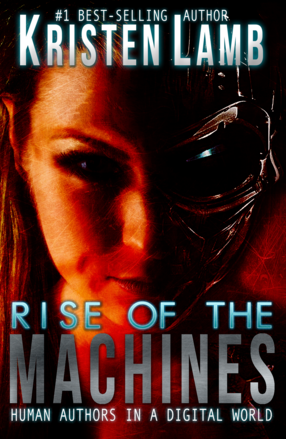For those who follow this blog regularly, first of all—THANKS! Today I will be blogging on the craft side of things. I am making it a goal to write about social media regularly, especially now that my book We Are Not Alone—The Writer’s Guide to Social Media is now available in eBook. The print version should be ready for purchase in a week or so. Social media is an amazing tool and it is a wonderful time to be a writer, but, I am going to point out the pink elephant in the room. We still have to write a darn good book. If we don’t write a darn good book, then no amount of promotion can help us. Sorry. That’s like putting lipstick on a pig. So we will talk about craft as well.
Today is an interesting topic. A Twitter pal of mine, Heather Harris (@heatheharris) actually made a request. I didn’t know I took requests, but apparently I do, and I gotta say that it made coming up with a topic MUCH easier. So if any of you wonderful readers would like to pick my editor brain, send in a request.
Anyway, Heather wanted to know if I had any blogs about setting. The funny thing is that, after over a year of blogs (56 posts) I have never addressed setting. Setting is extraordinarily complex, so I encourage your comments if you would like to add something helpful. I try to keep these blogs relatively short, and setting is worthy of volumes. But we will give it some needed attention. Thanks, Heather, for the suggestion. This blog is purely my opinion and based off my years of experience editing hundreds of stories.
Setting is a magnificent tool when used properly.
Setting can help your characterization.
Setting can actually serve a dual role in that it can be not only the backdrop for your story, but it can also serve characterization through symbol. We editors love to say, “Show. Don’t tell.” Well, here is where setting can help you do just that.
Say you have a character, Mitzy, who is depressed. You could go on and on telling us she is blue and how she cannot believe her husband left her for the Avon lady, or you can show us through setting. Mitzy’s once beautiful garden is overgrown with weeds and piles of unopened mail are tossed carelessly on the floor. Her house smells of almost-empty tubs of chocolate ice cream left to sour. Piles of dirty clothes litter the rooms, and her cat is eating out of the bag of Meow Mix tipped on its side.
Now you have shown me that Mitzy is not herself. I know this because the garden was “once beautiful.” This cues me that something has changed. And you managed to tell me she was depressed without dragging me through narrative in Mitzy’s head.
She couldn’t believe Biff was gone. Grief surged over her like a surging tidal surge that surged.
Writing is therapeutic, not therapy. Some of that introspection is great, but after a while you will wear out your readers. Setting can help alleviate this problem and keep the momentum of your story moving forward. We will get that Mitzy is depressed by getting this glimpse of her house. You have shown that Mitzy is having a rough time instead of being lazy and telling me.
We judge people by their environment. Characters are no different. If you want to portray a cold, unfeeling schmuck, then when we go to his apartment it might be minimalist design. No color. No plants or signs of life. Someone who is scatter-brained? Their house is full of half-finished projects. An egomaniac? Walls of plaques and pictures of this character posing with important people. Trophies, awards, and heads of dead animals. You can show the reader a lot about your character just by showing us surroundings.
Trust me, if a character gets out of her car and two empty Diet Coke bottles fall out from under her feet into her yard that is littered with toys, we will have an impression.
Setting can set or amplify the mood.
Either you can use setting to mirror outwardly what is happening with a character, or you can use it as a stark contrast. For instance, I once edited a medieval fantasy. In the beginning the bad guys were burning villagers alive. Originally the writer used a rainy, dreary day, which was fine. Nothing wrong with that. I, however, suggested she push the envelope and go for something more unsettling. I recommended that she change the setting to sunny and perfect weather. In the heart of the village the ribbons and trappings of the spring festival blew in the gentle breeze, the same breeze that now carried the smell of her family’s burning flesh.
Sometimes it is this odd juxtaposition in setting that can evoke tremendous emotion. This is especially useful in horror. Dead bodies are upsetting. Dead bodies on a children’s playground are an entirely new level of disturbing.
Setting is a matter of style and preference. Different writers use setting in different ways and a lot of it goes to your own unique voice. Some writers use a lot of description, which is good in that there are readers who like a lot of description. But there are readers who want you to get to the point, and that’s why they generally like to read works by writers who also like to get to the point. Everyone wins.
Whether you use a lot or a little setting will ultimately be up to you. I would recommend some pointers.
Can your setting symbolize something deeper?
I challenge you to challenge yourself. Don’t just pick stormy weather because it is the first image that pops in your mind. Can you employ setting to add greater dimension to your work?
In Shutter Island, Dennis Lehane’s story is set on an island at a prison for the criminally insane. What the reader finds out is the prison is far more than the literal setting; it is a representation for a state of mind. The protagonist, U.S. Marshal Teddy Daniels is imprisoned by his own guilt and need for justice. Like the island, he too is cut off from the outside world emotionally and psychologically. Now an island is more than an island, a prison is more than a prison, bars are more than bars, cliffs are more than cliffs, storms are more than storms, etc. Shutter Island is an amazing book to read, but I recommend studying the movie for use of setting as symbol.
So dig deeper. Can you get more out of your setting than just a backdrop?
Blend setting into your story.
When I teach, I liken setting to garlic in garlic mashed potatoes. Blend. Garlic is awesome and enhances many dishes, but few people want a whole mouthful of it. Make sure you are keeping momentum in your story. Yes, we generally like to be grounded in where we are and the weather and the time of year, but not at the expense of why we picked up your book in the first place…someone has a problem that needs solving. Unless you are writing a non-fiction travel book, we didn’t buy your book for lovely description of the Rocky Mountains. We bought it to discover if Ella May will ever make it to California to meet her new husband before winter comes and traps her wagon train in a frozen world of death.
Keep perspective and blend. Keep conflict and character center stage and the backdrop in its place…behind the characters. Can you break this rule? Sure all rules can be broken. But we must understand the rules before we can break them. Breaking rules in ignorance is just, well, ignorant.
In the end, setting will be a huge reflection of your style and voice, but I hope this blog has given some insight that might make you see more to your use of setting and help you grow to be a stronger writer.
Happy writing!
Until next time…
For some good books on this subject, I recommend Bob Mayer’s Novel Writer’s Toolkit. Jack Bickham’s Setting (Elements of Fiction Writing) is another valuable resource.









14 comments
4 pings
Skip to comment form
Please tell me you’ll be releasing the ebook version elsewhere besides Amazon for those of us who have something other than a Kindle!
Author
Awww…you are too sweet. Yes, it will also be out on Nook and iBooks soon. You can also get the PDF on the Who Dares Wins Publishing site.
http://whodareswinspublishing.com/coming-soon-non-fiction/
Which do you have? I will make sure to keep you posted. Wew haven’t been doing a lot of promoting because we wanted it to be available in all formats before we started plugging it. Thanks so much for your support and I really hope you enjoy the book, :D.
Nook. I also have an iphone so I CAN read the Kindle version but I prefer a larger screen. I am poised to pimp as necessary. I’ve been looking forward to this since the first time you mentioned it!
Author
I have the Nook, too so I will make sure I give you a shout-out, :D.
This was a terrific post! I need to dig deeper in my own story’s setting, and this article gave me good, concrete examples to follow. Thanks so much!
Author
Thanks, Melissa. I am so glad you enjoyed. 😀
Nice blog about the craft. A superb story is a successful blend of plot, characters and setting. Setting can be as important in a story as the characters and as important as the plot. I like your examples. To avoid being cliché in setting, write to mix up your reader’s expectations. Don’t show a rainy, gloomy day when something dismal is going to happen, instead show the unexpected…a sunny, breezy day, where the breeze carried the smell of burnt bodies. Setting can be huge or simple. It can be a tree or a whole forest. It says a lot and if setting is weak then it becomes just another story.
Good advice but -as always- and a great picture. Where is that castle?
Author
That was the prison from “Shutter Island.” We miss you! Hope you are having as much fun as is possible without us 😀
YES! That’s always one of my first things to pick before I start writing a story. Oddly enough, my favorite time to set a story is Christmas. Not sure why. I guess there’s so many easy ways to incorporate parts of Christmas into your story, with visuals, smells, and sounds that people are already familiar with…then you twist it. 😉
Author
Thanks for commenting, Jason. So you DO still read this blog :D. You writing about Christmas kind of scares me. That’s like Quentin Tarantino or Stephen King writing about Christmas time. I say that in a “you’re an awesome writer but very twisted and no heeding of the sacrosanct, dark observations” kind of way.
This is one of the most helpful posts about setting I think I’ve ever read. I’ve never been much of a descriptor (my characters are often floating around in ether as far as my description is concerned), so it’s nice to have some helpful tips for including the setting without drowning everything else out (which I also have a tendency to do because I don’t know how to get that nice middle ground).
Excellent and helpful observations! Setting can also function in hard science-fiction as a character: Poul Anderson’s FIRE TIME, C.J. Cherryh’s FORTY THOUSAND IN GEHENNA, and more recently, Sara Creasy’s SONG OF SCARABAEUS.
Awesome!
[…] at your scenes. Can they do more than one task? For some ideas, read my blog Setting—More than Just a Backdrop. Setting can be used for more reasons than to give readers a weather report. Lehane proves my point […]
[…] at your scenes. Can they do more than one task? For some ideas, read my blog Setting—More than Just a Backdrop. Setting can be used for more reasons than to give readers a weather report. Lehane proves my point […]
[…] at your scenes. Can they do more than one task? For some ideas, read my blog Setting—More than Just a Backdrop. Setting can be used for more reasons than to give readers a weather report. Lehane proves my point […]
[…] at your scenes. Can they do more than one task? For some ideas, read my blog Setting—More than Just a Backdrop. Setting can be used for more reasons than to give readers a weather report. Lehane proves my point […]